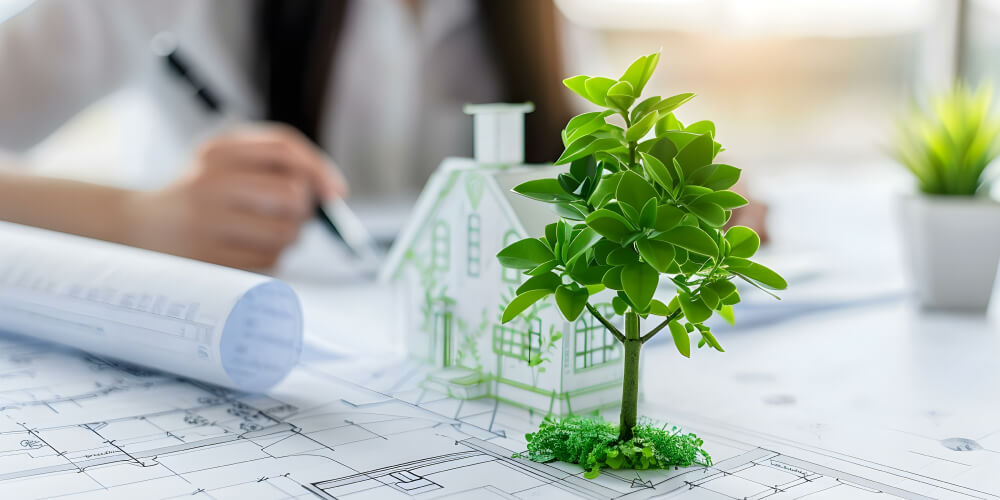1. Planning and Preparation
Set Clear Goals:
- Define Zero-Waste Objectives: Establish clear goals for your zero-waste renovation, such as minimizing landfill waste, reusing materials, and incorporating sustainable practices.
- Create a Plan: Develop a detailed plan that outlines the steps you will take to achieve your zero-waste objectives. Include timelines, materials needed, and disposal strategies.
Hire Eco-Friendly Professionals:
- Experienced Contractors: Choose contractors who have experience with sustainable and zero-waste renovations. Ask for references and examples of previous projects.
- Green Certifications: Look for professionals with green certifications, such as LEED (Leadership in Energy and Environmental Design) or affiliations with green building organizations.
2. Source Sustainable Materials
Use Recycled and Reclaimed Materials:
- Reclaimed Wood: Use reclaimed wood for flooring, cabinetry, and structural elements. It adds character and reduces the demand for new timber.
- Recycled Content: Choose materials with recycled content, such as recycled metal, glass, and plastic, to reduce waste and conserve resources.
Opt for Renewable Resources:
- Bamboo and Cork: These fast-growing, renewable materials are excellent for flooring and other applications.
- Natural Stone: Use natural stone, which is durable and recyclable, for countertops and other surfaces.
Non-Toxic and Low-VOC Materials:
- Low-VOC Paints: Use low or zero volatile organic compounds (VOC) paints and finishes to improve indoor air quality and reduce environmental impact.
- Natural Insulation: Opt for sustainable insulation materials like cellulose, sheep’s wool, or recycled denim.
Join HICP Homeowner’s Alliance
Connect with experts, get special discounts and enjoy member benefits
3. Deconstruction Instead of Demolition
Salvage and Reuse:
- Careful Removal: Deconstruct existing structures carefully to salvage materials for reuse. This includes doors, windows, fixtures, and cabinetry.
- Repurpose Materials: Repurpose salvaged materials in your renovation or donate them to organizations that can use them.
Recycling and Donations:
- Recycle Construction Debris: Separate and recycle materials like metal, wood, and concrete. Many recycling centers accept construction debris.
- Donate Usable Items: Donate fixtures, appliances, and building materials to local charities, Habitat for Humanity ReStores, or other organizations.
4. Efficient Waste Management
Set Up a Waste Sorting System:
- Designated Bins: Set up designated bins for recycling, composting, and landfill waste. Clearly label each bin to ensure proper sorting.
- On-Site Sorting: Sort waste on-site to reduce contamination and ensure that materials are disposed of correctly.
Partner with Waste Management Services:
- Local Recycling Centers: Work with local recycling centers to ensure that recyclable materials are processed correctly.
- Construction Waste Services: Hire waste management services that specialize in construction waste and offer recycling and disposal solutions.
5. Minimize New Purchases
Evaluate Needs Carefully:
- Reuse Existing Materials: Assess what materials and fixtures can be reused or repurposed in your renovation.
- Purchase Second-Hand: Look for second-hand or surplus building materials from salvage yards, online marketplaces, and local suppliers.
Opt for Multi-Functional Products:
- Space-Saving Solutions: Choose multi-functional furniture and fixtures that serve multiple purposes, reducing the need for additional items.
- Quality Over Quantity: Invest in high-quality, durable materials and products that will last longer and reduce the need for replacements.
6. Sustainable Construction Practices
Efficient Use of Materials:
- Precise Measurements: Take precise measurements to avoid over-ordering materials and reduce waste.
- Cutting and Fitting: Plan cutting and fitting to minimize offcuts and make use of scraps wherever possible.
Energy-Efficient Practices:
- Natural Lighting: Maximize natural lighting during construction to reduce the need for artificial lighting.
- Energy-Efficient Tools: Use energy-efficient tools and equipment to reduce energy consumption during the renovation process.
Water Conservation:
- Water-Efficient Fixtures: Install water-efficient fixtures, such as low-flow faucets and toilets, to conserve water during and after the renovation.
- Rainwater Harvesting: Set up rainwater harvesting systems to collect water for use in construction and landscaping.
7. Post-Renovation Strategies
Ongoing Waste Reduction:
- Compost Organic Waste: Continue composting organic waste from your kitchen and garden to reduce landfill waste.
- Recycling: Maintain a robust recycling system in your home to ensure that recyclable materials are properly disposed of.
Maintenance and Upkeep:
- Regular Inspections: Conduct regular inspections and maintenance to ensure that your home remains energy-efficient and sustainable.
- Sustainable Practices: Continue to practice sustainability in your daily life, such as reducing energy consumption, conserving water, and using eco-friendly products.
Implementing a zero-waste home renovation is a rewarding and impactful way to improve your living space while promoting sustainability. By planning carefully, sourcing sustainable materials, practicing deconstruction, managing waste efficiently, minimizing new purchases, adopting sustainable construction practices, and maintaining ongoing waste reduction strategies, you can achieve a successful zero-waste renovation. Embrace these principles to create a beautiful, functional, and environmentally-friendly home.




















